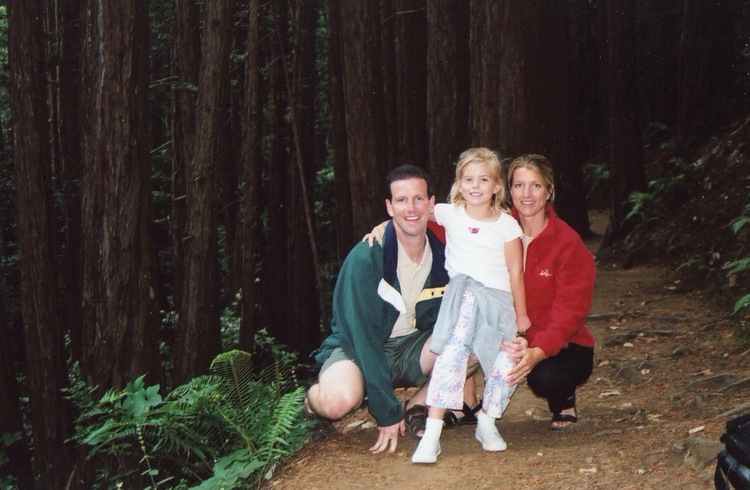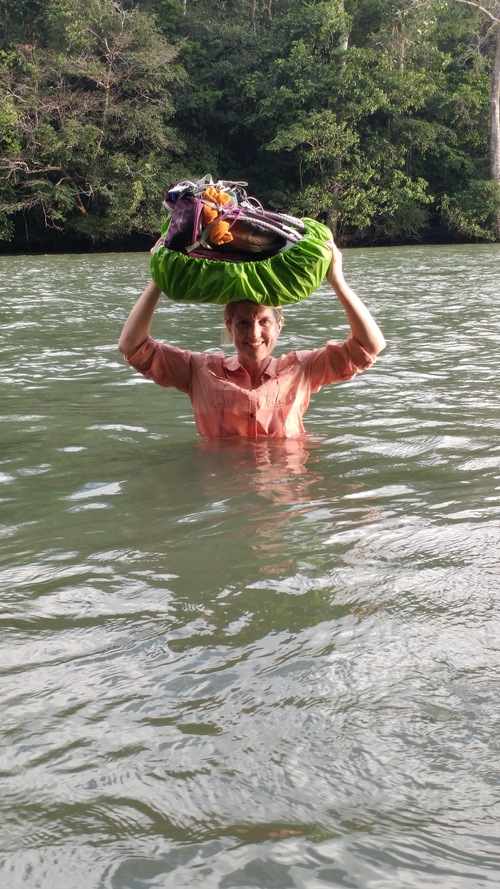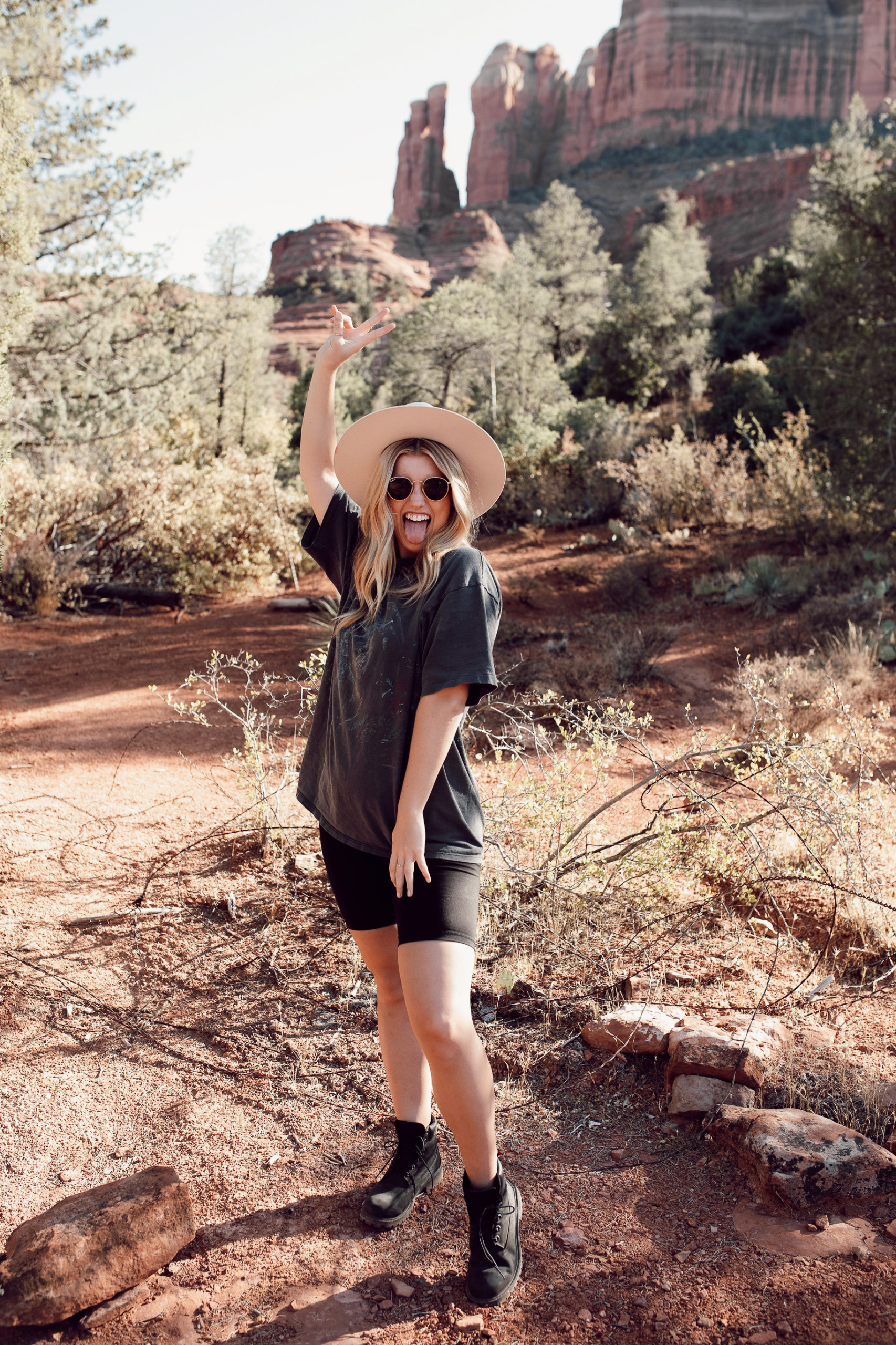After years of people reaching out asking for hiking tips and recommendations for all things gear, trails, and locations after seeing my post about all my adventures. I created this Hiking Guide for Beginners to be a helpful resource to those who are interested in learning more hiking tips and resources!
This blog post contains affiliate links which means I may earn a small commission on your purchase at not additional cost to you. All of these products I truly love and use!!
WHERE IT ALL BEGAN…
I am grateful to have been raised in a very adventurous family. Before I even had a say about whether we spent our Saturdays hiking or vacationing in the mountains, it’s what I grew to love. Please enjoy these gems from the “Herring Family archives”.


I have the raddest parents. Some of their most recent experiences include backpacking through the rain forests of Costa Rica and road tripping for 2 months to some of the best national parks – absolutely crushing some of the most iconic and challenging hikes. The funniest part is that if you ask them, they will tell you “they’re not avid hikers,” but the photos below beg otherwise.



HIKING GUIDE FOR BEGINNERS – PLANNING + RESEARCHING
When I’m not out exploring the world, you can find me planning the next adventure [this is when my Enneagram 1 really kicks in]. For me, planning looks like hours of research looking for local places to eat, fun areas to stay, and the best things to do. After I gather all the information, I strategically place into an excel spread sheet with color coding, hyperlinks and timelines, ha ha…#planner #always
Biggest Tip: AllTrails is your best friend!
This is my #1 go to when researching hikes. They provide SO much information and many different features – pictures, reviews, ratings, tracking your hikes, downloadable maps, etc. You can also create folders to save your favorite hikes from all over the country for potential trips! I think the reviews are my favorite. You can see what tons of different people actually think – what was the terrain like, trail conditions, was there a bathroom at the trail head or limited parking, etc.
Sometimes I have noticed the milage of hikes it slightly off [usually no more than a mile] or the review might not be totally accurate because the reviewers might be at different fitness levels than me [sometimes under selling or over selling how difficult a trail is]. Not only do I use it for research, but I also while hiking! I use it track our hike time, mileage, elevation gain, and mapping to make sure we are staying on the trail [some trails are NOT well marked].
To sum it up, if you don’t have it already – download the AllTrails App NOW!
Most important tip in this Hiking Guide for Beginners – ALWAYS tell someone where you are hiking!
Where [what trail head] AND when [what time you are starting and aim to finish]! Even if you aren’t going alone, it’s always better to have someone [who is not with you] know where you are. This can truly be life saving in a worst case scenario!
Click here to check out more WILDLY LIFE Adventures!



HIKING FOR BEGINNERS – HIKING ATTIRE
What’s in my closet?
Hiking Gear
Hiking Boots: Danner Mountain 600 Leaf GORE-TEX Hiking Boots – highly recommended getting a pair that’s waterproof and has a higher ankle support, saved me so many times from rolling an ankle!
Socks: Darn Tough Socks – only socks that don’t give me blisters! I get the length that is higher than the top of my boots.
Day Pack: Osprey Talon 22 with 2 Liter Reservoir – best for shorter hikes [8 miles or less], just enough room for my water, a few snacks, and the essentials. No need to weigh yourself down for no reason!
You can check out more of Caleb and I’s MUST-HAVE hiking gear here!
Hiking Clothes
Hiking Pants: Columbia, REI– main thing for me is having pants that are stretchy but durable! Love the material of hiking pants because they dry off quickly if you need to wash them in a river or it begins raining. Anything with pockets is great because I keep my phone handy for pictures! Typically I prefer pants over shorts because it protects your legs against bugs, bushes, and poison ivy!
Hiking Shorts: Spandex biker shorts [no particular brand] – they are super flexible, cool in the summer, come with pockets now, and are high waisted. What more could you want!
Hiking Tops [Warmer Climates]: Dry-Fit Short Sleeves – my go to place to look is in the workout sections at TJMaxx or Target. Lululemon workout tops are my absolute favorite but I only buy them when they go on major sales! Columbia and REI have great ones as well. The thing that makes the biggest difference to me is dry fit material since it absorbs sweat better and dries quicker. Personally, I avoid wearing cotton because it gets so much hotter and takes forever to dry. I always prefer have some sort of sleeve so the backpack doesn’t irritate my shoulders when it rubs; only wearing tanks when it’s deathly hot or humid outside.
Hiking Tops [Cooler Climates]: Dry-Fit Long Sleeves – specifically the fitted shirts with the thumb hole. They’re my favorite because you can sometimes get away without wearing gloves. May hands get hot so fast when hiking in the winter and it’s easy to slip your thumb through than constantly taking gloves on and off!
Hiking Layers: Flannels, Pullovers, and Insulated Jackets! – flannels from Goodwill, Nike or Under Armour pullovers, and Patagonia or North Face Nano Puff Jackets! ALWAYS WEAR/PACK IN LAYERS PEOPLE!!
Accessories: Bandanas/Neck Scarfs – helps absorb sweat, you can use as a towel if needed, plus they are cute! [Worst case scenario they could be used as a tourniquet ha…] AND Sunglasses – pack them year round, even in the winter it can be sunny :)
Hiking Attire Tip: shop the sales!
I have been lucky to purchase some very expensive attire for a fraction of the price. I persistently shop at discount stores, like TJMaxx, to find hidden gems. Shop in the off-season – find what you love then wait for a great sale to buy. If you’re balling on a budget like me, just be patient and get a little creative with your shopping!



HIKING GUIDE FOR BEGINNERS – WHAT TO PACK
What’s in my backpack?
Hiking Essentials
Most hiking accidents happen when people aren’t properly prepared. They make the mistake of thinking “oh I don’t need that, it’s just a short easy hike”. No, ALWAYS be over prepared.
If you only remember one thing for this Hiking Guide for beginners, it’s what essentials you should pack on EVERY hike. Most hikers would agree to have the following items with you at all times, no matter the length of hike, time of day or year:
- Water, water, water!! – factor in the length/strenuous level of trail, climate, and how much you typically consume when deciding how much to bring
- Emergency Medical Kit
- Pocket knife
- Flash light or head lamp
- Whistle
- Matches– bring cotton balls/pads for fire starter!
- Toilet paper – just a few squares, no need to bring the whole roll! Also, pack it in a ziploc bag so you can put the used toilet paper back inside #cleanliness
- Wet Ones Antibacterial Wipes – I prefer this to clean my hands over hand sanitizer because if I have dirt or anything, it takes wipes it off rather than just rub it in
- Bug spray – every time I forget this, it is seriously the biggest regret of my life
- Chapstick – nothing is worse than chapped lips on a windy or cold hike!
- Sunblock – your face can get burnt even in the winter people!!
- Sunglasses – protect your eyes!
- Rain jacket– where on the mountain can change rapidly and rain can seriously come out of nowhere…
- For winter, the same applies but I bring gloves, hat, at least 2 jackets [usually wearing one], and hand warmers!
Hiking Snacks
I like to have a balance of protein and energizing sugar! My go to lunch is a combination of the following: PBJ Sandwich on Dave’s Killer Bread, Trader Joe’s Dried Mango, Red Grapes, Pink Lady Apples, Cliff Bars, Nature Valley granola bars, Almonds, and M&M’s.
Fruit is great for hydrating with something other than water [I don’t like the taste of any flavored water or energy drinks]. Nuts are super high in protein to help replenish you when burning through those calories! I get super light headed and low blood sugar when hiking in the higher altitudes so having a sugary treat [like M&Ms] keeps me from passing out. My advice is to bring a few different snacks on the trail when starting out and overtime you’ll find what works best for you!
Biggest Tip: shop at REI, shop at REI, shop at REI!!!
The REI team is always super welcoming, helpful, and knowledgeable. They’re ready to answer any of your questions and assist you in trying on gear until you find the right fit. I think the biggest incentive to shop there return policy – “We stand behind everything we sell. If you’re not satisfied with your REI purchase, you can return it for a replacement or refund within one year of purchase”. For example, my mom purchased a hiking backpack that ended up making her shoulders bleed because it rubbed so bad. She took it back to REI explaining the issue and they let her return it no problem. It really gives you peace of mind knowing that they trust their products so much. REI only sells products their customers will love, but if some reason you don’t, they’ll give you your money back.


[…] New to hiking and want to learn more about basics to hiking? Check out my Hiking 101 blog! […]
[…] Visiting one of the National Parks in Arizona? Check out my Hiking Guide for Beginners! […]
[…] Find this Best Travel Bag blog helpful? Check out Hiking Guide for Beginners: Tips + Resources! […]
[…] Looking to get more into hiking but don’t know where to start? Check out my Hiking Guide for Beginners! […]
[…] Not sure what to pack for your hike? Check out my Hiking Guide for Beginners! […]
[…] Interested in learning more about hiking but don’t know where to begin? Check out my Hiking Guide for Beginners! […]